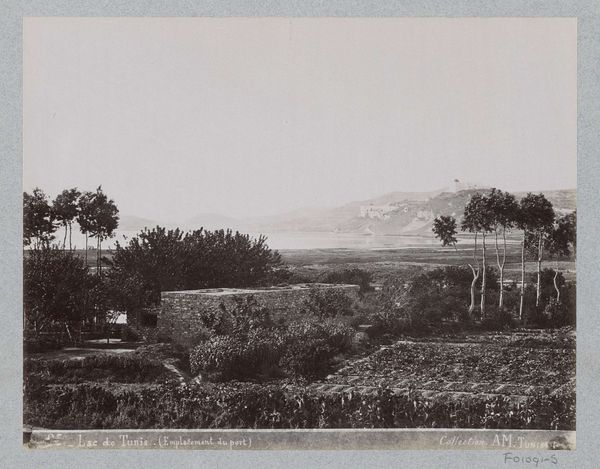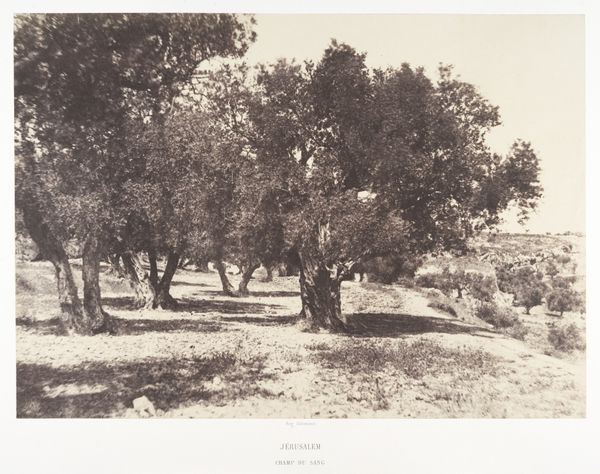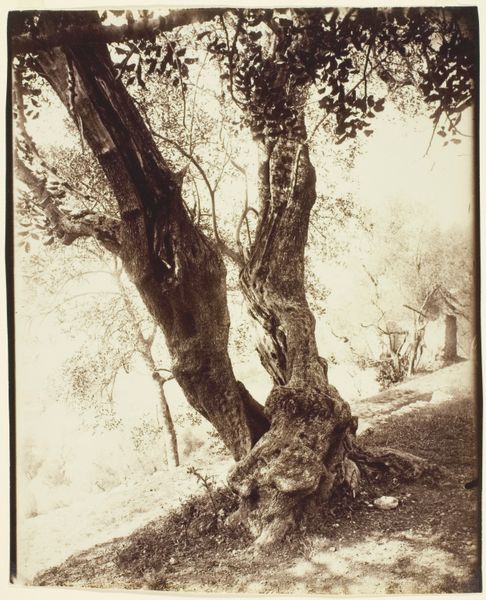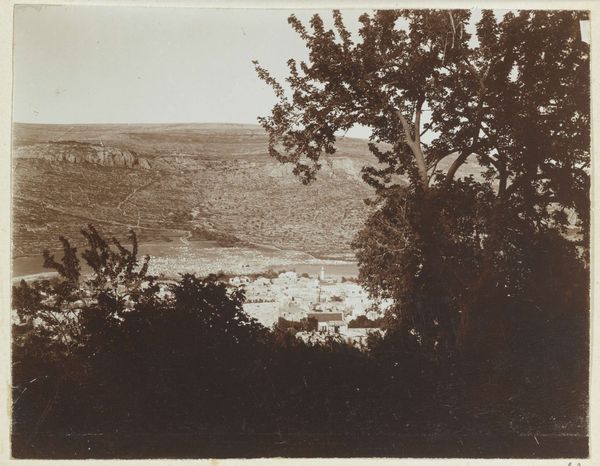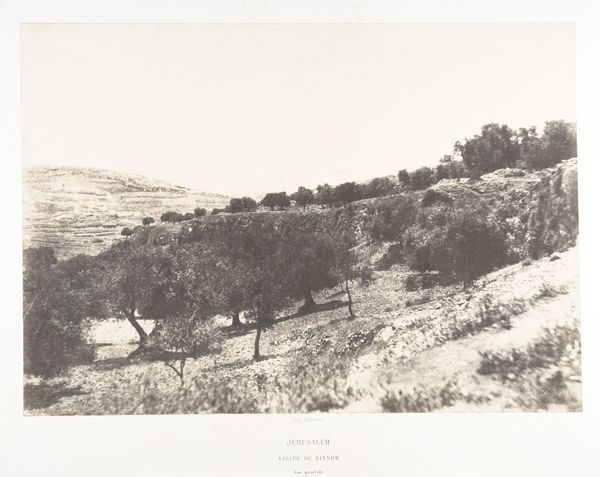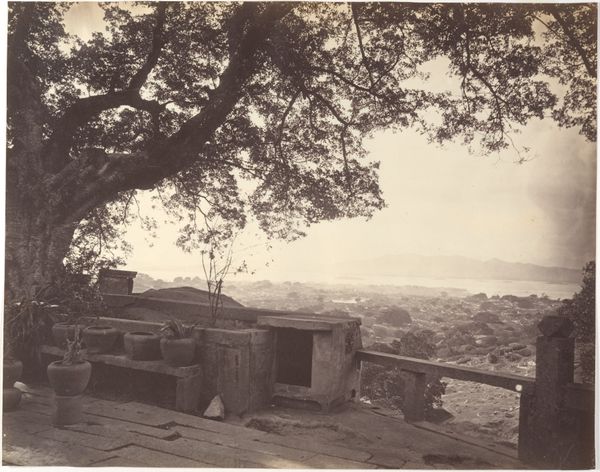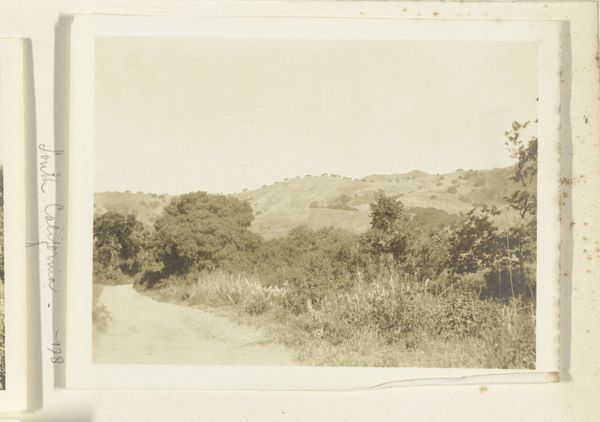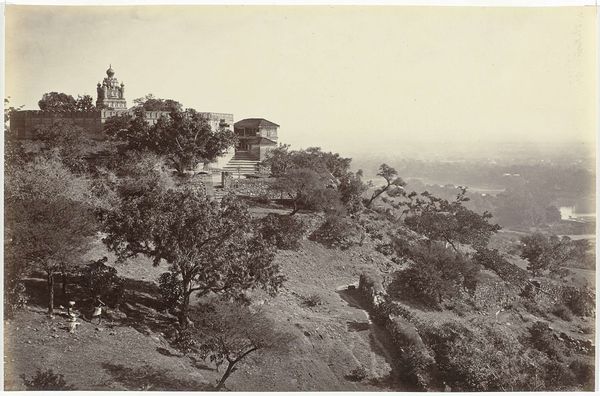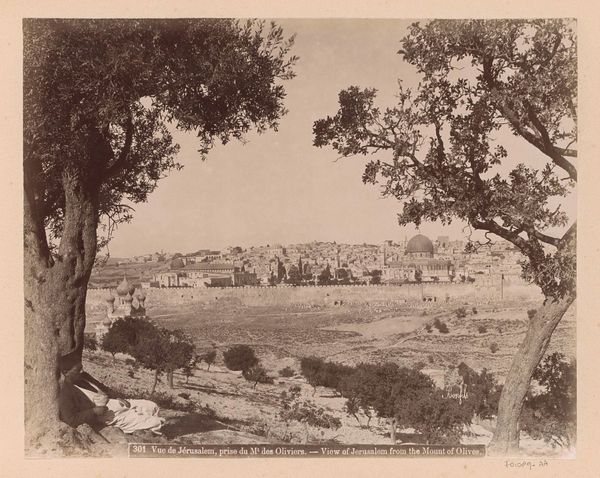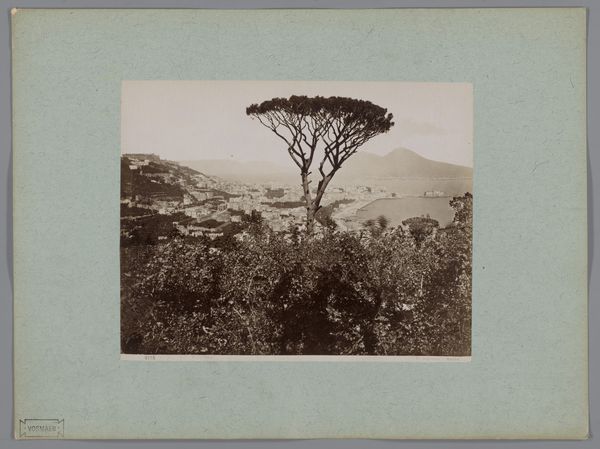
Gezicht op Cap Martin en omgeving gezien vanuit Menton c. 1886 - 1896
0:00
0:00
photography, albumen-print
#
pictorialism
#
landscape
#
nature
#
photography
#
albumen-print
Dimensions: height 217 mm, width 275 mm, height 322 mm, width 498 mm
Copyright: Rijks Museum: Open Domain
Editor: We're looking at "Gezicht op Cap Martin en omgeving gezien vanuit Menton", which roughly translates to "View of Cap Martin and surroundings seen from Menton," a photograph dating from about 1886 to 1896, currently at the Rijksmuseum. It’s attributed to Henry Pauw van Wieldrecht and made with the albumen print process. I'm immediately struck by the misty, dreamlike quality, almost like looking at a faded memory. What stands out to you? Curator: Ah, yes! Faded memories, you say... Indeed, it almost *whispers*, doesn't it? For me, it's the dance between the sharp details of that foreground tree – those knobbly branches reaching out – and the hazy distance. Van Wieldrecht is not just documenting a scene; he's creating a mood. It reminds me a little of early pictorialism where clarity bows to atmosphere, you know? Do you find the composition creates a sense of depth, pulling you into the scene? Editor: Definitely, the tree acts almost like a curtain framing the landscape beyond. Was photography at this time often striving to achieve effects we associate with painting? Curator: Precisely! Think of those soft brushstrokes translated into softened focus, mimicking Impressionist paintings, perhaps? And the albumen print lends itself well to this: those delicate tones… But it's more than imitation. These photographers were staking their claim, saying, "Photography, too, can be art." Do you see anything else that gives you a sense of the cultural context? Editor: Maybe the choice of a picturesque, almost romantic, landscape? It seems to idealize nature. Curator: Good eye! The late 19th century was awash with romanticism, a yearning for an idealized past. Van Wieldrecht offers us not just a view, but a carefully constructed vision of harmony and tranquility. So, what's the lingering thought as you look at this work now? Editor: I now better understand its artistic intent, viewing photography less as just capturing and more as crafting a mood, using a technique that almost obscures details to enhance beauty. Thank you! Curator: And perhaps to ask ourselves if that harmony truly existed or was simply imagined in the collective dreams of that era? It has been a delight, thank you for sharing your view with me!
Comments
No comments
Be the first to comment and join the conversation on the ultimate creative platform.
